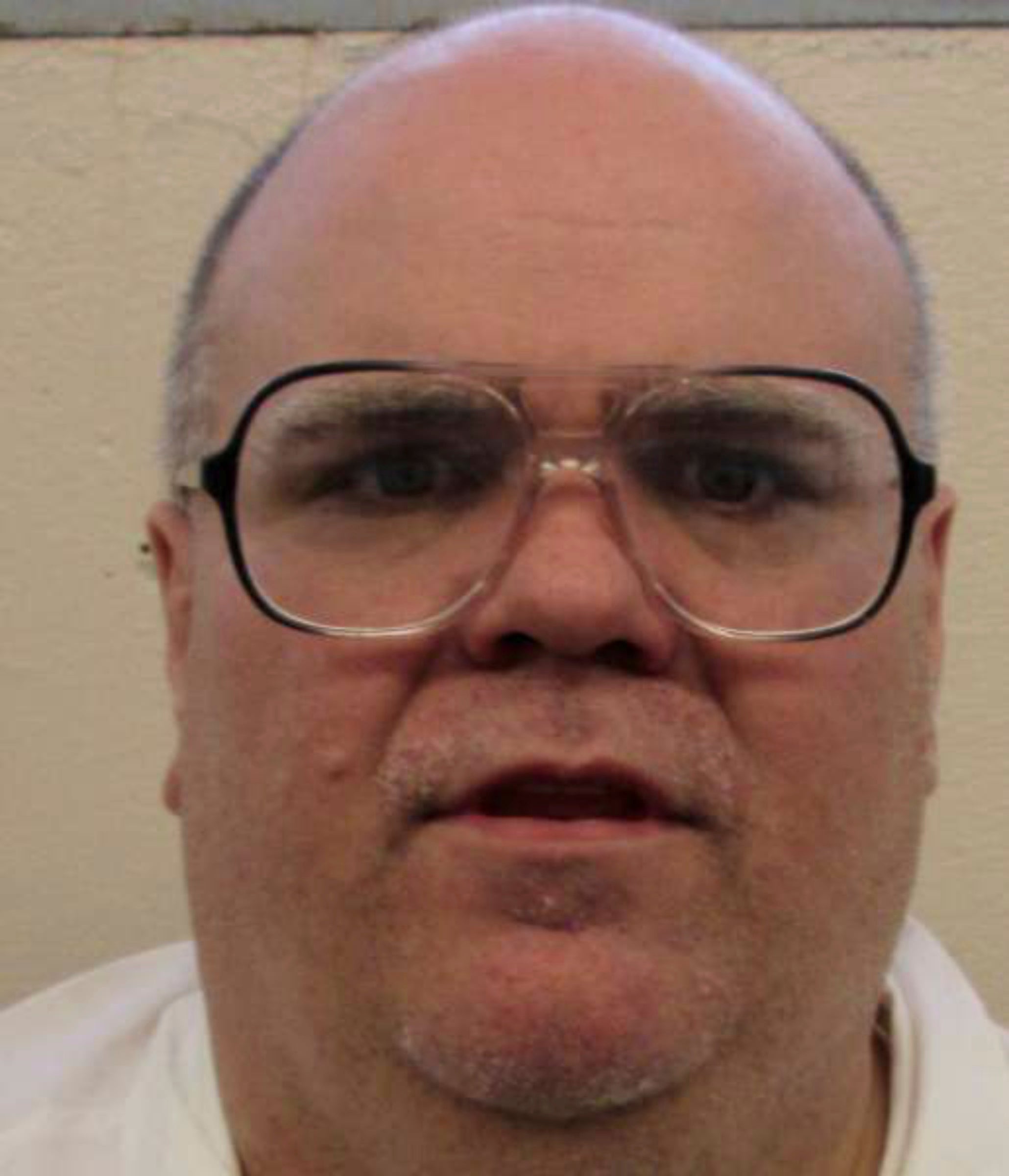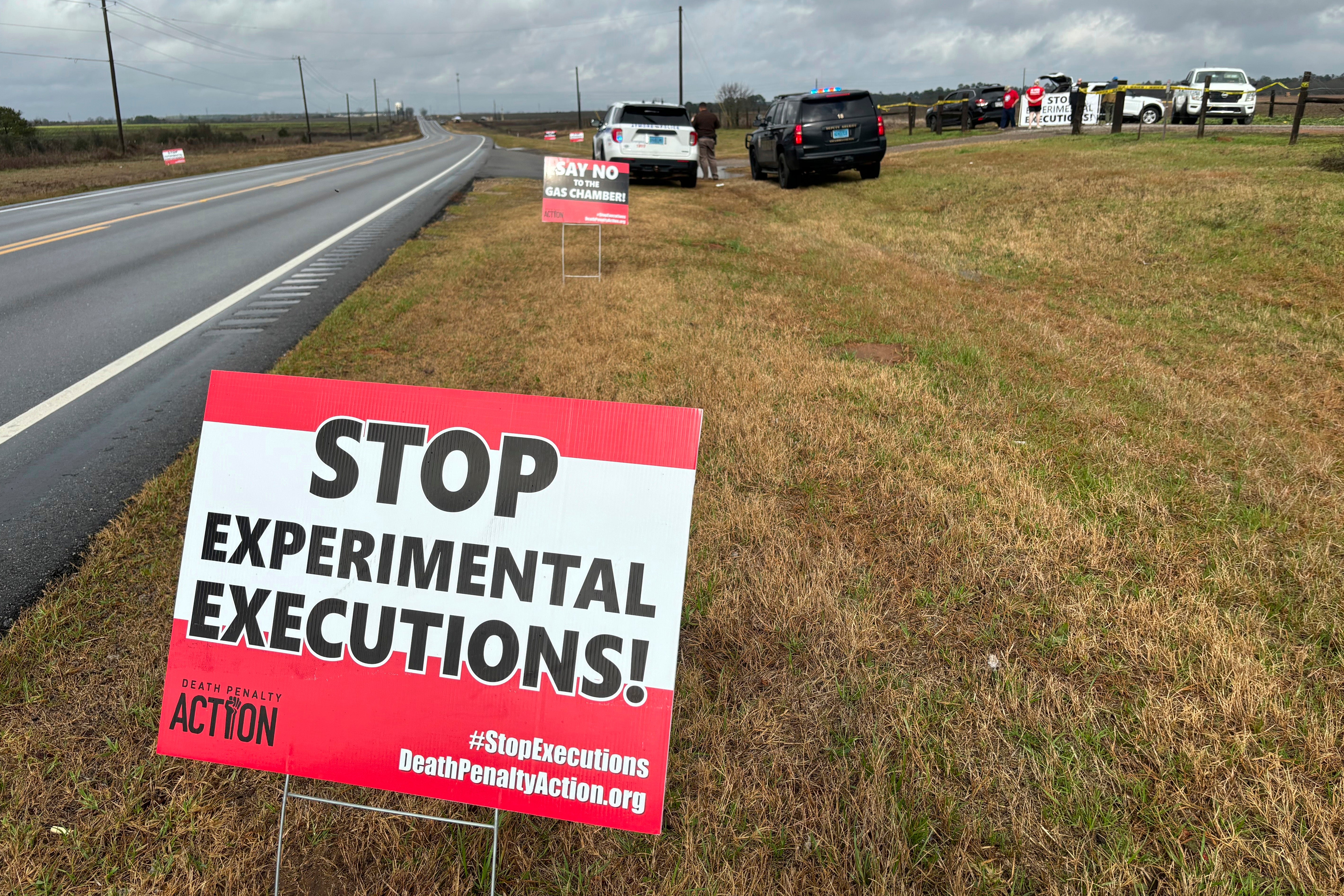Alan Miller becomes the second death row inmate executed by nitrogen hypoxia in the US
Miller’s execution was scrutinized because a forensic psychiatrist found him ‘mentally ill at the time of the offenses’

Alabama has executed Alan Eugene Miller, marking the second time the state has put a death row inmate to death using nitrogen gas.
Miller died at 6.38 pm on Thursday and was earlier visited by three attorneys, his brother-in-law, two sisters, brother, spiritual advisor and a friend. His last meal was hamburger steak, a baked potato and French fries.
Before prison officials administered the flow of nitrogen, Miller said: “I didn’t do anything to be in here...I didn’t do anything to be on death row,” according to an AL.com reporter who witnessed the inmate’s final moments.
Miller reportedly moved his fingers on the gurney as the gas began to flow. He took deep breaths and lifted his head several times. He proceeded to struggle against the restraints, shaking for about two minutes followed by six minutes of gasping on and off.
Alabama Department of Corrections Commissioner John Q Hamm stated that Miller’s execution went according to procedure.
“There’s going to be involuntary body movements as the body is depleted of oxygen so that was nothing we did not expect,” he said during a news conference.
It was the fifth execution since Friday. Freddie Khalil Owens, Marcellus Williams and Travis James Mullis had all been put to death in the days before Miller’s execution. Emmanuel Littlejohn died Thursday morning.
Miller, 59, had been convicted of the 1999 murders of Terry Lee Jarvis, 39, Lee Holdbrooks, 32, and Christopher Yancy, 28. The inmate killed the men on August 2 that year over suspicions they had discussed his sexuality, per USA Today. Prosecutors said Miller killed Holdbrooks and Yancy at their place of employment and then drove to a second business to shoot Jarvis.
The murders happened where Miller had worked or previously worked, and the victims were found with several bullet wounds.
The execution at the William C Holman Correctional Facility in Atmore came days after a report from The Intercept claiming some of the state’s executioners have been accused of violence and misconduct. The Alabama Department of Corrections did not respond to the outlet’s request for comment.
Miller had raised his own concerns over how the state planned to put him to death.
In January, Kenneth Eugene Smith, another Alabama inmate, became the first person in the world to be executed via nitrogen gas. Witnesses said they saw Smith “writhing and thrashing” for about two to four minutes followed by five minutes of heavy breathing.

Smith’s spiritual advisor, Reverend Jeff Hood, called it “torture.”
Nitrogen hypoxia forces inmates to breathe nitrogen through a mask that displaces the oxygen in their system. The method rose in popularity among death penalty states because the drugs for lethal injections became difficult to find.
State officials said Smith’s execution faced complications because the inmate held his breath at the beginning, which delayed the flow of nitrogen gas into his system. They had expected him to be dead of asphyxiation within minutes after gas began to flow.
Alabama decided to execute Miller with nitrogen hypoxia following a failed lethal injection attempt in 2022 in which executioners could not establish an IV line. Miller alleged he was poked for 90 minutes while officials tried to execute him.
Additionally, the inmate said he had previously designated nitrogen hypoxia as his method of choice on a government form but the state said it had no record of that decision being made.
As a result, the state planned to move forward with nitrogen hypoxia in the event of a second attempt for Miller.
But after Smith’s execution, Miller told state officials he thought executioners were too “incompetent” to put him to death.
“I don’t think y’all know what you’re doing,” Miller said as part of a lawsuit he filed in July attempting to bar the state from using the method on him.

His attorneys argued the state’s execution “captain” has no medical or scientific training, and had received no training for fitting gas masks. Miller expressed uncertainty about whether the mask would fit him because he has a “big old head,” he said.
The inmate entered into a confidential agreement with the state regarding his execution the following month, announcing he would no longer seek legal attempts to stop his death.
Following Miller’s death, Alabama Attorney General Steve Marshall said: “In Alabama, we will not deny justice to the victims of heinous murders. Tonight, despite misinformation campaigns by political activists, out-of-state lawyers, and biased media, the State proved once again that nitrogen hypoxia is both humane and effective. Miller’s execution went as expected and without incident.”
Alabama’s decision to go ahead with the execution faced scrutiny because a forensic psychiatrist testified at trial that Miller was “mentally ill at the time of the offenses,” and prosecutors were unable to obtain a unanimous jury vote for death.
There are currently 160 inmates on death row in Alabama. Inmates are given the choice of three execution methods: nitrogen hypoxia, electrocution or lethal injection. After Smith’s execution, the attorney general’s office said 30 inmates had already chosen nitrogen hypoxia as their method.
Prisoners now seeking to change their method would need to do so through the courts. Alabama first approved nitrogen hypoxia for executions in 2018. Since then, Mississippi and Oklahoma have followed suit. After Smith’s execution, a handful of state legislators expressed enthusiasm for adopting the method.
